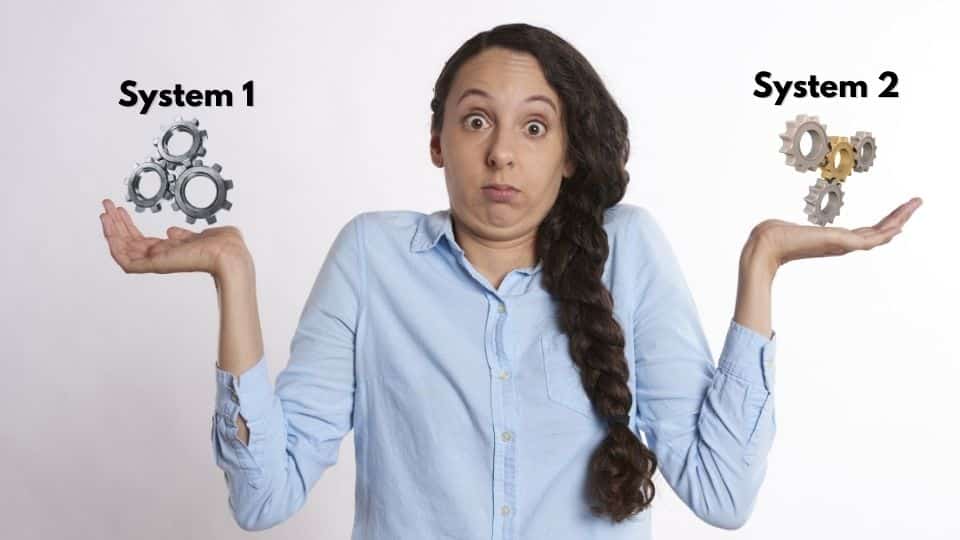Think-Write-Share:
A Powerful Model for Strategic Thinking & Planning
by Sean Foster | March 30, 2023 | Strategy

Since 2017 I have been helping clients with their quarterly business planning. To be honest, it's hard work. Enjoyable, but hard work.
How do you operate your business or personal planning? Do you do this quarterly like clockwork, or is it a bit of a grind and you do this more ad-hoc? And in the process is it really making you think strategically?
Now life in business does not follow the time frames that we set, rather it follows its own drumbeat. So whether you call this quarterly or 90-day planning, this time frame is really just the behaviour set, i.e to create the habit, to strategically think about your business. A time to consider what is and is not working, a time to reconsider where you will spend less of your focus and where more of your time, focus and energy is required.
If you do this correctly, your outcome will be:
-
- A clear focus area for the business and the individuals or teams in the business. This is not a shopping list of to-do's. These are strategic initiatives to move the business forward for long-term gain.
- The plan will consolidate and sync with your company values and assist in uniting everyone in the business towards a common set of objectives.
- The plan will, by default, highlight where you should not be focusing your time and energy (you only have so much time to excel in what you should be focusing on.)
Related Article: The best 90-day plans for a successful business
What is Strategic Thinking?

Socratic thinking
Dates back to around 400 BC, you would think after another 2400 years of evolution that we would be pretty good at strategic thinking by now. But, we are not. And there is a very good biological reason why and some handy tools to help us improve how we go about this process.
In business, strategic thinking involves you analysing and evaluating your company’s internal and external environment, as well as identifying and prioritising strategic objectives. This then marries with your decision-making or planning process. You cannot select the best course of action (aka. create a plan) if you don't have a bullet-proof strategic thinking process in place.
The good news is that developing your strategic thinking skill is relatively easy to do, especially if you follow the 'think-write-share' model to ensure multiple perspectives are considered in the decision-making process.
How Often Should Strategic Planning Be Done?

There is no set rule for how often you should be planning. As a bare minimum, this would be yearly, but for the average business, the yearly plan should be re-dissected at least every 90 days (4 times/year).
Related Article: Setting Goals for Success: 5 Tips to Define Clear Goals
System 1 vs System 2 Thinking

Our brains have two modes of thinking – System 1 and System 2. System 1 thinking is our automatic, intuitive, and fast-thinking mode. It's the mode we use when we're on autopilot, and we don't need to engage in deep thinking.
System 2 thinking, on the other hand, is our analytical, logical, and deliberate mode of thinking. This mode requires effort and attention and is slower than System 1 thinking.
When it comes to strategic thinking and decision-making, it's essential to engage System 2 thinking. This allows us to analyse and evaluate all the options available to us before making a decision. By doing so, we can make better decisions by reducing the risk of errors by not making decisions based on biases or assumptions.
The challenge we have is that we have a natural tendency to overly rely on our system 1 think when running our business from day to day. This is possibly the biggest contributor to us not formally taking the time out to strategically consider our business.
Strategic Thinking and Problem-Solving
The 'think-write-share' model is the tool that you should master to overcome this system 2 problem. And best of all, it is brilliantly simple for you to indoctrinate in how your business goes about your planning sessions.
Here's how it works and this is my recommended approach at your next planning session:
1. Think
As the ‘facilitator’ or business owner, open your planning meeting by correctly framing where the business is now and where it would like to be heading. It is never ‘plane sailing’, so you could highlight some of the restrictions or hurdles that are currently impeding progress.

Next, encourage everyone involved to take the time to think about the problem or opportunity. If this sounds too simple it is, but stick with the plan here.
This thinking time should only be for a few minutes. It is a private or silent time when everyone has the opportunity to independently consider the situation without being influenced by anyone else. And more importantly, it is engaging system 2 thinking.
2. Write
Next, ask everyone to write down their thoughts on a card or A5-size paper.
But before asking them to do so give them some guidelines on how they should be doing this. There is little value in just writing down the issue, e.g “we don't have enough sales” or “our team spirit sucks”.

Encourage everyone to be open-minded and to consider different perspectives by thinking through them at a deeper level. For instance, the above examples could be re-written as:
Eg.1 - “We don’t have enough sales and I think this is because we are not investing enough into developing our technical sales skills.”
Eg.2 - “ Our team spirit sucks in that there seem to be too many personal confrontations and when there is a problem there is a strong blame game going on. There are many days I dread coming to work because of the problems from a day or week before.”
The reason why everyone must write their thoughts down is to further entrench their system 2 thinking as well as to solidify that thinking.
3. Share
The final step is the sharing of the information that is on the cards. Each person gets to read out what they have written out.
What this process is allowing for is that everyone will have a voice at the table and will be heard.

This not only shows respect for others' contribution, but is the most effective way of extracting this thinking from those that don't normally do so. It could be that they are naturally introverted, or feel that their thoughts do not matter or simply lack the confidence to express them.
There is a modification to this sharing step that I think is even better. This involves you as the facilitator collecting the cards after they have been written up and handing them out to different people. Now when people read the cards out they are expressing and supporting someone else's thoughts. The big advantage here is that for the person reading the card out, there is far less chance of them being defensive on the point and encourages them to consider the alternatives.
There are some basic guidelines that you should give them before they read the cards out. These are:
-
- To be respectful of the other person’s view point, comments and thinking
- To embrace the card as if they had written it themselves. They do not need to stubbornly defend what is on the card (i.e not to be defensive), but to embrace the comments as a genuine alternative approach or understanding that deserves better understanding.)
By using the 'think-write-share' model, you will better ensure that everyone has a say in the strategic thinking and planning process and that all perspectives have been considered. This can lead to better decisions, increased buy-in, and greater team cohesiveness.
What Is The Purpose

This is another important consideration to consider prior to your next strategic and planning workshop. And unless you frame this correctly you will likely get a mish-mash of solutions and problems being raised at the same time.
This is a problem because it’s a little lack playing ‘whack a mole’. Someone says ‘let's do this …’, and another says ‘that won't work, let’s do this …’, and another says ‘sure, but that won't fix my problem, we need to …’ Sound familiar?
Einstein famously quoted: “If I had an hour to solve a problem I'd spend 55 minutes thinking about the problem and five minutes thinking about solutions.”
Our system 1 thinking tends to jump into solution mode, and when our thinking is completely biased towards the way we see this world, not only do we see the problem differently to others, but our assumption on the solutions is equally vulnerable as it builds on a flawed way of understanding the fundamentals.
So before starting the Think-Write-Share framework, make it very clear to all that we are in problem identification mode or solution exploration mode. This step is critically important, and like Einstein illustrated, make sure that you have crystal clarity on the problem before embarking on solution discovery.
Last step - I patiently wait on your feedback. The next quarter demands your attention and you now have the tools to build your experience in running a highly productive strategic thinking and planning workshop. After you have completed the above you will find it a whole lot easier to complete your 90-day plan.

Sean Foster
Business Advisor - Coach
PS: Interested in working with me? I help in 3 ways:
[1] Work with me privately to improve your business profitability, scale your business & improve your personal and business productivity - Schedule an appointment here.
[2] Join BIG – in-person, group based coaching program. Operating from Silverdale, Auckland
[3] Understand & develop your behavioural habits through psychometric behavioural assessments & coaching
** System 1 and System 2 thinking is an oversimplification of how the brain works. So although the reference is technically incorrect, it does illustrate the concept of how we tend to think and is a commonly accepted analogy of the process.

Recent Comments